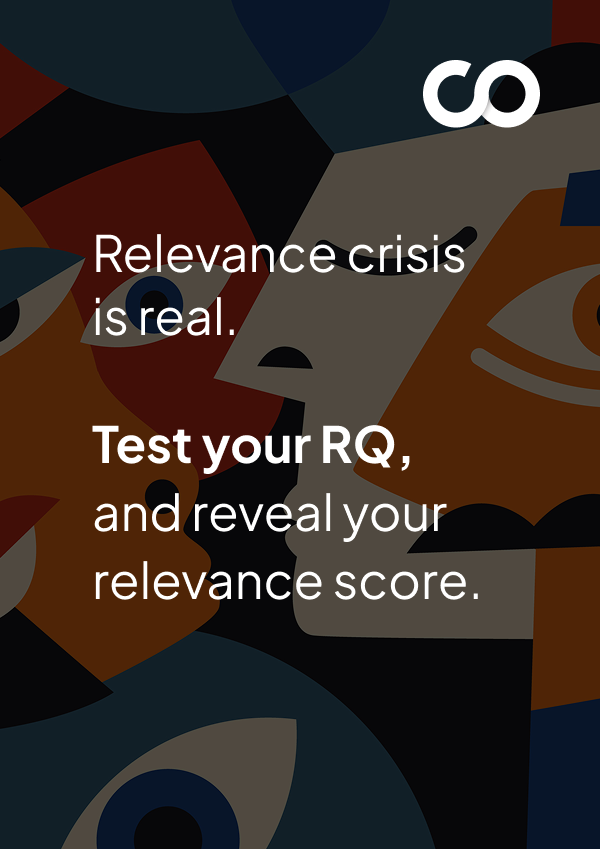Convert Website to App
Convert Your Website into a Mobile App for Android and iOS

From a Static Website to a High-Adoption Mobile App
Your website may be attracting traffic, but without a mobile presence, it’s missing the opportunity to turn visitors into active, loyal users. Mobile apps deliver higher engagement, faster interactions, and better retention, yet most businesses delay app adoption due to time, cost, or technical complexity. The result? Lost conversions, inconsistent user experiences, and limited growth in a mobile-first world.
Converting your website to an Android and iOS app is no longer a long, expensive process. Using design-thinking frameworks and low-code accelerators, we transform your existing website into a fully functional, cross-platform mobile app.
With Flutter and React Native, we re-engineer your digital experience for mobile. We add real-time sync, push notifications, and intuitive gesture navigation that make every interaction effortless. Each app is built for speed, engagement, and reliability, integrating smoothly with your existing backend systems and cloud stack.

The Impact:
30%
Lower Development Cost
Up to 70%
Increase in Repeat Visits
Download The Master Guide For Building Delightful, Sticky Apps In 2025.
Build your app like a PRO. Nail everything from that first lightbulb moment to the first million.
From Downtime and Compliance Gaps to Always-On Healthcare IT
We don’t just wrap your website in an app shell. Instead, we rebuild apps that keep users connected through real-time updates, offline access, smart notifications, and secure logins.
When web and app content aren’t aligned, users see outdated information, for instance, expired offers, incorrect prices, or missing content. This inconsistency erodes trust, disrupts engagement, and adds repetitive maintenance effort.
We integrate Firebase Cloud Messaging and WebSocket synchronization to maintain real-time parity between your website and app. Any content update on your CMS, from product listings to announcements, is reflected instantly on the app. This eliminates redundant deployment cycles, ensuring your app always reflects the latest version.
This results in a foolproof content sync, reduced update time, and a consistently fresh user experience.
Example: During a flash sale, an e-commerce site updates its pricing and discounts, but app users continue to see the old prices. By implementing WebSocket-based sync with Firebase, the platform will ensure that all updates appear instantly across web and app. This will prevent misinformation and improve sales accuracy.
Losing network connectivity shouldn’t mean losing customers. Without offline access, users abandon sessions mid-task, leading to frustration and drop-offs.
We implement service workers, SQLite local storage, and asset caching to ensure that essential app features remain functional even when the device is offline. Critical data, such as product catalogs, articles, or transaction details, is stored locally. Once connectivity is restored, delta synchronization algorithms ensure that only updated records are transmitted, thereby reducing bandwidth consumption and sync time.
This results in lower bounce rates, faster load times, and improved task completion in low-connectivity environments.
Example: While on a train, users of a travel portal lose signal and can’t view their bookings. By implementing local caching and auto-refresh logic, the app can enable access to stored itineraries offline and update them once the network connection is restored. This helps minimize support queries.
Without an intelligent notification strategy, apps risk losing users after the first session. Generic broadcast pushes rarely convert because they lack context and timing.
We implement event-driven push infrastructures that deliver the right message to the right user at the right moment. We build a notification orchestration layer using AWS SNS and OneSignal, integrated with your backend event triggers. Push campaigns are segmented through Lambda-based rules engines, allowing contextual, behavior-based notifications that link directly into the app’s deep screens.
The result: up to 70% higher reactivation rates and measurable uplift in conversions through personalized, timed prompts.
Example: After browsing a new collection, users often leave without making a purchase. By implementing segmented push notifications that highlight restocks and limited-time offers, the brand can re-engage these users. This can lead to higher conversions during follow-up campaigns.
Users value speed, but they trust security. When converting a website to an app, managing multiple authentication systems, one for web and another for mobile, creates unnecessary friction and vulnerability.
We build unified identity systems using AWS Cognito or Auth0, configured with OAuth 2.0, OpenID Connect, and JWT tokens for secure, single-sign-on (SSO) access. This ensures users can log in easily with the same credentials across web and mobile.
For convenience, we support social logins (Google, Apple, Facebook) and biometric authentication (Face ID or Touch ID), which are layered with refresh-token rotation and RSA-256 encryption to prevent replay or session hijacking attacks. Logs are centralized through CloudTrail or SIEM systems to ensure auditability and compliance.
Example: When a learning platform launches its mobile app, learners are often required to re-register, resulting in high drop-off rates. Integrating OAuth-based unified login will enable users to access both web and app versions, improving onboarding success and retention rates.
Converting your website into an app shouldn’t just improve engagement; it should open new revenue streams. We enable mobile-native monetization by integrating Stripe SDK, Razorpay, or Google Play Billing APIs for in-app purchases, subscriptions, and renewals.
For ad-based models, we implement AdMob mediation and frequency controls to strike a balance between monetization and user experience. All payment systems are PCI-DSS compliant, utilizing tokenized transactions and encrypted payloads to ensure data security.
We also provide a revenue analytics layer to monitor conversion rates, churn, and subscription health in real time. All of these enable new recurring revenue streams, increased ARPU (average revenue per user), and a balanced user experience.
Example: During peak traffic hours, a news portal’s web ad revenue plateaus. By integrating AdMob and in-app subscriptions, the app can introduce new revenue streams, thereby enhancing its overall ad yield and sustaining profitability.
To scale effectively, you need to know how users behave inside your app. Without granular insights, optimization becomes a matter of guesswork.
We embed Google Analytics for Firebase, Mixpanel, and Amplitude to capture real-time behavioral data, funnel analysis, and retention metrics. Data flows through AWS Kinesis Firehose into a Redshift data warehouse, creating a single source of truth for user actions. Dashboards built on Metabase visualize key metrics, including engagement frequency and conversion funnels.
This setup enables teams to correlate design changes with measurable business outcomes, thereby improving product decisions, marketing precision, and ROI visibility.
Example: After launch, a learning platform notices a steep drop-off after users watch the first two videos. By integrating Mixpanel to analyze engagement flow, the team can identify UI bottlenecks and simplify navigation, leading to higher course completion rates.
Many website-to-app conversions fail because they simply wrap a web view instead of optimizing performance for native hardware.
We optimize your app’s speed and responsiveness using HTTP/2 multiplexing and GPU-accelerated rendering with Skia. Our engineers profile every build using Android Profiler, Xcode Instruments, and Lighthouse CI, identifying bottlenecks early in the CI/CD pipeline.
Moreover, we employ lazy loading, asset preloading, and thread prioritization to maintain a stable 60 FPS, even during high-load scenarios. This results in twice the rendering speed, lower memory usage, and smoother animations across devices.
The overall result? Deeper engagement, longer session durations, and stronger emotional connection with your brand.
Example: A logistics platform struggles with delays in delivery verification. By integrating GPS tracking and camera APIs, drivers can capture proof of delivery with real-time location tagging, thereby improving operational accuracy and customer trust.
A mobile app represents your brand every time a user opens it. If the design feels generic or the app lacks protection, it directly affects trust.
We create immersive, brand-consistent interfaces with custom splash animations (Lottie), gesture-based navigation (React Navigation), and adaptive color systems that mirror your web experience. Accessibility is ensured through WCAG 2.1 compliance, extending usability to all users.
Security is embedded at every layer. We utilize SSL pinning, certificate transparency, and Runtime Application Self-Protection (RASP) to safeguard against man-in-the-middle attacks and code tampering. We also implement root/jailbreak detection for high-risk environments.
This results in higher brand recall, stronger data protection, and sustained user confidence.
Example: A fintech SME launches a mobile dashboard for payments but faces concerns about data security. By implementing SSL pinning and encrypted navigation flows, the company will be able to safeguard transactions and enhance credibility among clients.
Your website already has the audience.
It’s time to transform it into a mobile experience built for the future.
Transforming Clicks Into Continuous Mobile Interactions Across Sectors
| Industry | How Website-to-App Conversion Benefits Your Business |
| Healthcare | Mobile apps enable patients to access reports, schedule visits, and receive updates instantly. Real-time reminders reduce missed appointments, while secure data access ensures continuous, compliant care. |
| Fintech | App-based banking offers instant transactions, fraud alerts, and portfolio tracking. Users stay engaged through faster interactions, driving stronger trust and higher retention. |
| Retail | Converting retail websites into apps enhances repeat purchases by offering personalized promotions, sending push notifications, and facilitating faster checkouts. Shoppers stay connected, improving loyalty and sales. |
| Transportation | Apps bring live tracking, shipment updates, and route optimization to logistics platforms. Real-time visibility reduces delays and improves delivery accuracy. |
| Education | Learners benefit from mobile access to lessons, progress tracking, and the ability to study offline. This flexibility enhances completion rates and engagement across devices. |
| Energy | Energy providers gain apps that show real-time consumption and outage alerts. Customers can easily monitor usage, encouraging efficiency. |
| Insurance | Policyholders manage renewals, claims, and documents directly from the app. Quick access shortens processing time and improves trust in the service. |
Our Adoption-Driven Blueprint for Website-to-App Success
We treat conversion as transformation, not translation. By combining design thinking with structured execution, we ensure that your app doesn’t simply mirror your website. Instead, it amplifies it, turning web visitors into loyal, returning users.
Our team aligns with your leadership to define measurable objectives, outlining what the app must achieve in terms of adoption, engagement, retention, and ROI. We look at user journeys that matter most to your business, such as onboarding, transactions, or customer support, and establish KPIs around them. This step ensures the engineering effort is guided by outcomes, not assumptions.
We conduct a thorough audit of your current website’s structure, performance, and user experience. This includes analyzing page load times, engagement patterns, accessibility, and analytics data to identify what works and what doesn’t.
We prioritize high-impact user flows, content modules, and backend dependencies to determine what should evolve, what should remain, and what must be re-engineered for mobile. The outcome is a clear picture of how your existing ecosystem can transition smoothly into an app environment.
Web behaviors don’t translate directly to mobile. We redesign your existing user flows for smaller screens, faster interactions, and continuous engagement. Every tap, scroll, and gesture is carefully considered to minimize friction and cognitive load. Our designers and product strategists apply mobile-first UX principles to ensure the most critical actions, such as sign-ups, checkouts, bookings, or logins, are effortless and intuitive.
Consistency between web and mobile is essential. We architect how your app will sync data, manage sessions, and update content without manual intervention. Key content categories (static, real-time, and user-generated) are structured for efficiency.
This phase ensures that app users always see the latest information, can continue where they left off, and can access vital features even when offline. This helps build reliability into the user experience from day one.
Our design team transforms your brand identity into a mobile-native experience. We build interactive prototypes that demonstrate how users will move through your app: from splash screens to navigation menus and transactional flows. The output is a validated mobile design system that reflects your brand while improving usability and time-to-task efficiency.
We transition prototypes into production-ready builds using a sprint-based delivery model. Each sprint covers development, QA, and performance testing, ensuring features are validated as they’re built. Our CI/CD pipelines automate builds, run security checks, and push incremental updates to staging environments.
Throughout development, we embed telemetry to capture crash data, latency metrics, and user interaction patterns, turning your app into a self-improving product.
Once the core app is ready, our engineers focus on optimization. We refine load performance, manage API communication, and configure caching and data persistence to minimize lag. We validate security layers, including encryption, authentication, and permissions, against industry standards.
We also prepare the infrastructure for scale, ensuring the app can handle surges in usage without compromising reliability. This step ensures the app performs consistently across devices, networks, and regions.
We plan and execute the app launch with precision and accuracy. App Store and Play Store assets, beta releases, and rollout strategies are handled end-to-end. Post-launch, our analytics dashboards continuously monitor engagement, retention, and conversion metrics in real-time.
We review performance every week, analyze user feedback, and refine features that drive business outcomes. Continuous optimization keeps your app aligned with user expectations, ensuring it grows in capability and value over time.
Our Trusted Tech Stack for Smooth Website-to-App Conversions
| Category | Tools and Technologies |
| Frontend Development | React Native, Flutter, SwiftUI, Kotlin Multiplatform |
| Backend & API Integration | Node.js, Firebase, GraphQL, RESTful APIs |
| UI/UX Design & Prototyping | Figma, Adobe XD, Zeplin |
| Performance Optimization & Monitoring | Lighthouse, Firebase Performance, AppDynamics |
| Push Notifications & Engagement | Firebase Cloud Messaging (FCM), OneSignal, AWS SNS |
| User Authentication & Security | OAuth 2.0, JWT, AWS Cognito, Firebase Auth |
| Analytics & User Insights | Google Analytics for Firebase, Mixpanel, and Amplitude |
| Offline Access & Data Sync | IndexedDB, SQLite, Realm, Service Workers |
| App Monetization & Ads | Google AdMob, RevenueCat, Stripe SDK |
| Deployment & Store Management | Fastlane, App Center, Play Console, App Store Connect |
Proven Results from Real Businesses
Don’t just take our word for it. See how we’ve helped forward-thinking companies turn their websites into high-performing mobile apps that drive measurable impact. They’ve improved load times, added features, and achieved faster user adoption, higher retention, and stronger brand loyalty.
We transform companies!
Codewave is an award-winning company that transforms businesses by generating ideas, building products, and accelerating growth.
A Network of Excellence. Our Clients.
Frequently asked questions
Conversion costs range from $5,000 to $20,000, depending on features, functionality, and target platforms. Basic webview apps are lower-cost, while custom native builds are higher. Contact us for a customized quote tailored to your project scope and goals.
Yes. With live sync and real-time data pipelines, any content or layout updates on your website can reflect instantly in the app. For dynamic content (like products, posts, or listings), we implement API-based synchronization to eliminate manual updates and ensure users always see current data.
Not always. For most SMEs, cross-platform frameworks like React Native or Flutter deliver near-native performance on both platforms with a single codebase. If your product requires device-specific capabilities (e.g., AR, advanced camera features), we may recommend native builds to utilize hardware-level performance fully.
Basic conversions are typically ready within 24 hours, while feature-rich, custom apps usually take 4–6 weeks, including design, testing, and app store approvals. Our phased approach prioritizes a rapid MVP launch, allowing you to start acquiring users early while continuing to evolve features in parallel.
Absolutely. We handle App Store and Play Store submissions, metadata optimization, and approval compliance.
Most in demand
Latest thinking
Stop losing users after the first click. Give them an app they’ll return to.
Start Your Mobile App Transformation Today






























































